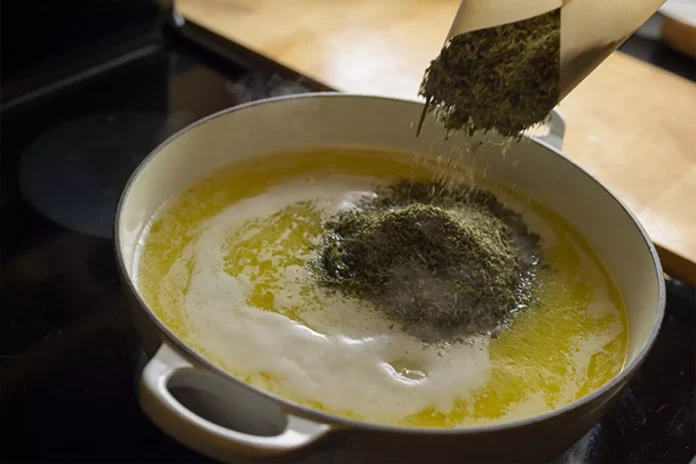
As more states legalize marijuana for recreational and medical use, cooking with cannabis has become increasingly popular. Edibles provide a unique and discreet way to consume marijuana compared to smoking and vaping. However, making edibles requires a certain level of skill and knowledge to ensure the desired effects and avoid unpleasant experiences.
In this article, we will discuss some tips and tricks for cooking with cannabis to make delicious edibles at home. Whether you’re a seasoned cannabis user or a beginner, these tips will help you create potent and tasty edibles that are sure to impress. With a little practice and patience, you can master the art of cooking with cannabis and enjoy the many benefits it has to offer.
Start low and slow

Starting low and slow is a fundamental principle of responsible cannabis consumption. Whether you are a beginner or an experienced user, it is important to understand the potency of the product you are consuming and to take it in small doses to avoid any unwanted effects. This is especially important when cooking with cannabis, as the effects can be delayed and long-lasting.
When experimenting with cannabis-infused recipes, it is best to start with a small amount of cannabis and gradually increase the dosage as needed. This will help you to find the right balance between the desired effects and the potential side effects. It is important to be mindful of your body’s reaction to the cannabis and to adjust your dosage accordingly.
Remember, cannabis affects everyone differently, and what works for one person may not work for another. By starting low and slow, you can ensure a positive and enjoyable experience with cannabis, while minimizing the risk of any negative side effects.
Decarboxylate the cannabis
Decarboxylation is a crucial step in preparing cannabis for cooking. When cannabis is raw, the psychoactive compounds, such as THC, are in their acidic form and are not active. Decarboxylation is the process of heating the cannabis at a low temperature to activate these compounds and make them bioavailable.
To decarboxylate cannabis, you need to grind it into small pieces and spread it evenly on a baking sheet. It’s essential to make sure that the cannabis is not too tightly packed, as this can prevent it from evenly decarboxylating. Once you have spread out the cannabis, you can bake it in the oven at around 230°F for about 40 minutes. This temperature and time ensure that the cannabis is adequately decarboxylated without burning or overcooking.
Decarboxylation is essential for making cannabis-infused edibles, as it ensures that the cannabinoids are active and will produce the desired effects. By taking the time to decarboxylate your cannabis properly, you can create potent and effective edibles that are sure to impress.
Choose the right strain

Choosing the right strain of cannabis is an essential step in making edibles. The strain you choose can impact the taste and effects of your final product, so it’s crucial to consider what kind of experience you want to create.
Indica strains are generally better suited for edibles that are designed to help with relaxation, pain relief, or sleep. Indica strains tend to be high in the cannabinoid, myrcene, which has a sedative effect and can help you unwind.
Sativa strains, on the other hand, are known for their energizing and uplifting effects. These strains are ideal for edibles that are meant to be consumed during the day, such as those designed to enhance focus or creativity.
You may also want to consider the cannabinoid profile of the strain, as this can affect the psychoactive effects of the edibles. CBD-rich strains can counteract the psychoactive effects of THC, making them ideal for those who want to experience the therapeutic benefits of cannabis without feeling high.
Infuse the cannabis into fat

Infusing cannabis into fat is a crucial step in making edibles. Since cannabinoids are fat-soluble, they need to be mixed with a fat to be effectively absorbed by the body. By infusing cannabis into fat, you can easily incorporate the therapeutic benefits of cannabis into a wide range of dishes, from baked goods to savory dishes.
To infuse cannabis into fat, you need to start by decarboxylating the cannabis to activate the THC. Once you have decarboxylated your cannabis, you can mix it with a fat such as butter or oil and heat the mixture over low heat for a few hours. This will allow the cannabinoids to bind with the fat, creating a potent and flavorful infusion.
It is important to remember to stir the mixture occasionally and to keep the heat low to prevent burning or overcooking. Once the infusion is complete, you can strain the mixture to remove any plant material and use the infused fat in your recipes.
Infusing cannabis into fat is a simple and effective way to incorporate the benefits of cannabis into your cooking. By taking the time to infuse your ingredients properly, you can create delicious and potent edibles that are sure to impress.
Be mindful of dosage

It’s crucial to be mindful of the dosage when cooking with cannabis. The potency of edibles can vary widely, depending on factors such as the strain, dosage, and cooking method. Always start with a small amount and wait at least two hours before consuming more. It’s also a good idea to keep track of your dosage and keep your edibles out of reach of children and pets.
In conclusion, cooking with cannabis can be a fun and delicious way of consuming marijuana. However, it’s essential to approach it with caution and knowledge to avoid unpleasant experiences. By starting low and slow, decarboxylating the cannabis, choosing the right strain, infusing the cannabis into fat, and being mindful of dosage, you can create delicious and potent edibles at home. However, if you do not want to cook yourself, you can save time by going to https://hometownherocbd.com/collections/baked-goods. There are already prepared dishes.



